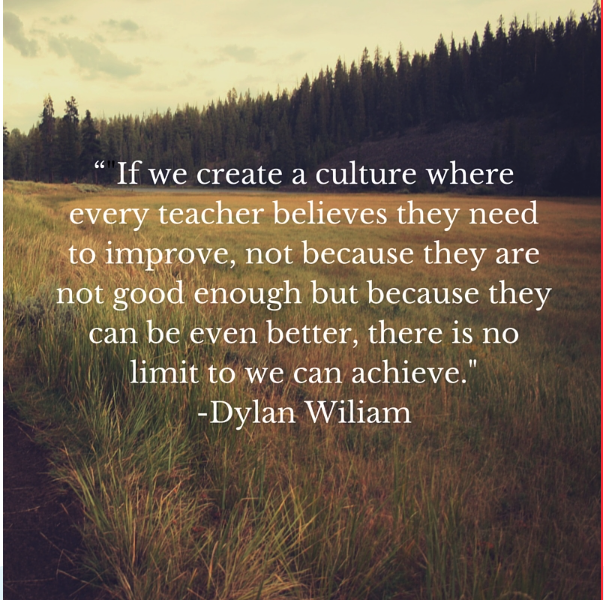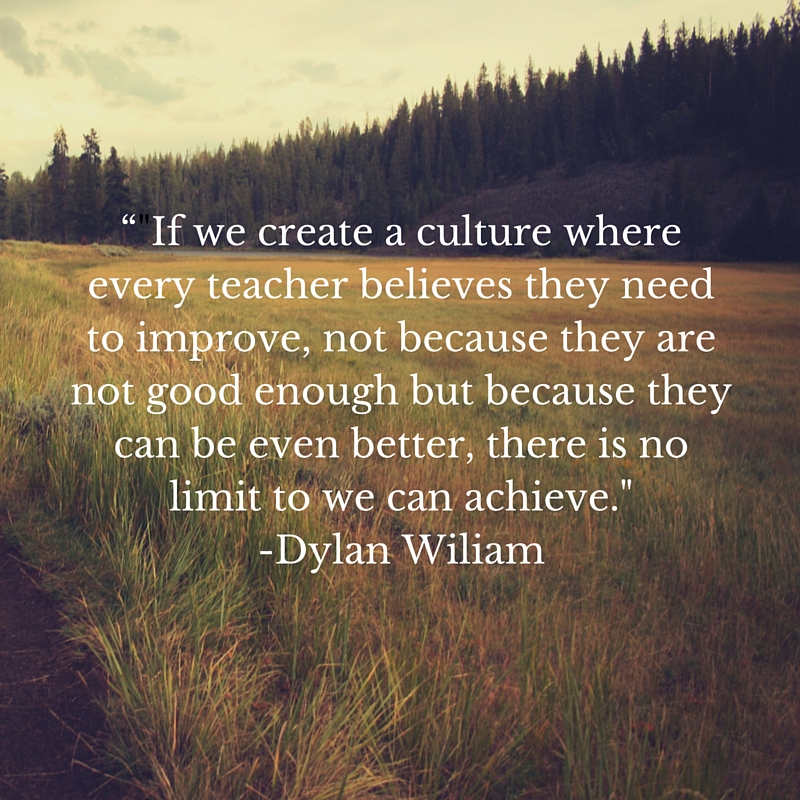Have you ever left a meeting, PLC, or any other professional development session wondering what the purpose of the time together was and still unclear about what is expected of you? Unfortunately, you are not alone. This happens time and time again at all levels of education and then we pass on these same experiences to our students. We adopt a program or standards or new curriculum and without really understanding the goal or the underlying pedagogy, we implement and expect others to learn without first learning ourselves. Too truly create a culture, where learning is the focus for everyone, we must leverage the collective genius, as Linda Hill shares in her TedTalk, How to Manage for Collective Creativity. After reading, Five reasons your school is NOT transforming, I was inspired to dig a little deeper and share my experience in some of the major reasons that professional development is NOT transforming learning.
1. Lack of shared vision- Teachers nor administrators have a clear and/or shared understanding of what the desired learning environment looks like or their specific role in making it happen. If there is no clear vision it is hard to align professional development and support. Due to lack of a clear vision for learning and teaching, new initiatives often get reduced to compliance of minutes or getting through units rather than focusing on what students are learning. Educators must be part of creating the shared vision and empowered to drive their learning that will enable them to create powerful learning opportunities for their students.
2. There’s no buy in- If there is an unclear vision and teachers understand their role as complying with mandates and show up to meetings not because they are excited to learn and grow but because they are expected to, this rarely inspires a culture of learning. If teachers do not “buy-in” and understand their role in new initiatives or innovations, they will never make the desired impact because the teachers, in the end, have the final say of what happens in the classrooms.
3. There’s no culture of learning- This might seem ironic, but many schools lack a culture of learning. There is an expectation of implementation or doing a lot of “things,” but rarely do we talk about what we are learning or how we are developing our practice. If teachers are not regularly sharing practices, observing one another, and providing feedback, how are you growing the collective genius of the group? How do you determine the impact on authentic student outcomes? How do you make informed decisions about what is working well and what is not? How do you create new and better experiences for your students? A culture of learning must begin with a safe space for teachers to open their doors and share their practice, receive targeted feedback, and relentlessly pursue opportunities to more effectively develop the knowledge and skills to create the desired learning environments.
4. Lack of focus on student outcomes- I struggle with this title because of the over-emphasis on accountability in terms of test scores, but I am talking about a focus on broader student outcomes than a single standardized test. If we dedicate time and resources to collaborate and design better learning experiences for students, we need to hold each other accountable for improving desired student outcomes. I have sat through countless planning sessions, curriculum mapping, and even great conversations about what 21st-century skills might look like in the classrooms, but if you never look at student work, observe learning in the process, and analyze the impact on student learning, it rarely changes practice and instead wastes time creating more documents that people forget to look at.
5. Lack of connection to other educators- As George Couros often says, “Isolation is a choice that educators make.” There are so many resources available for educators to connect with and learn from one another. It is easy to get comfortable doing what has always worked. If you aren’t connected to other educators in your school, district, or globally, you are not exposed to new ideas or pushed to think about better ways of doing things. It is easy think that the way you have been doing it is the only or best way when you aren’t seeing other models. To continue learning and developing your practice, it is important for teachers to get out of their classroom, both physically and virtually, to leverage the collective genius of the many educators across the globe.
If any or all of these problems exist than likely you have a culture of compliance instead of a culture of learning. Until teachers understand the vision, have clear expectations, and engage in collective inquiry to find and solve problems that impact powerful learning, they will not buy in and change their practice. As Dylan Wiliam says, “If we create a culture where every teacher believes they need to improve, not because they are not good enough but because they can be even better, there is no limit to what we can achieve.” Deep meaningful learning-whether it is administrators, teachers, or students- takes time, ownership, and investment. If you want to create a culture of learning, you can’t cut corners.




I’m a director of professional learning in a public school district who believes that professional learning can be engaging, relevant, and personal to educators. I realize PD in general takes a beating, but healthy professional learning can make each educator more effective in meeting the needs of his/her students. I’d like to specify some tangible & concise remedies for each of the problems listed above.
1. Pick a focus based on student needs and teacher needs.
2. Collect & use input to foster ownership of the learning.
3. Have high expectations for all those in a learning organization to learn!
4. Monitor how what we learn as adults is making a difference for the students we serve!
5. Be collaborative with purpose.
Hi Kathy, Thanks for your comments! I definitely agree that professional development can be extremely effective when the right conditions exist. I love your suggestions and think it is so important that we continue to work with administration and teachers to create cultures of learning. I have been thinking a lot about how to personalize learning for teachers to meet their diverse needs and foster ownership of learning like you suggest. I wrote about it in these 2 blogs and would love your thoughts.
http://katielmartin.com/2015/07/23/are-you-training-people-or-creating-opportunities-for-learning/
http://katielmartin.com/2015/07/06/a-systematic-approach-to-personalized-professional-learning/
Numbers 1, 2 and 4 are the key. For me, number 4 is the only focus. I’m talking about real student outcomes not just test scores. All too often, I hear about administrators and legislators hyping innovation (think LAUSD) without focus on what you’re trying to achieve with the students. One to one laptop or tablet initiatives rarely focus on what the outcome of the student interaction with the technology should be. When I promote flipping a class I do so not for the sake of flipping. I focus on the student being able to watch the lecture or demonstration; pause or rewind and even watch it again if needed. They also have to do something with the information so having them complete notes or comment in writing to gauge understanding. Then in class have them work with the newly attained information working on projects, addressing and discussing questions, or evaluating previous knowledge. The reports, papers, and projects they produce serve as examples of their learning and understanding. Their test scores should also not suffer as they will have greater comprehension.
Unfortunately, these kind of things rarely take place outside a culture of learning and when faculty feel isolated. Hopefully, more educational leaders will heed the points of this article and take bold steps..(it is a dream , I have).
Hi Herb, Thanks for your comments! Teachers working together to focus on authentic learning outcomes is so critical and, I agree, shouldn’t be done in isolation. We need teachers and leaders to work together to create a culture of learning.
Hi Katie
You might like the ideas behind our startup’s software mme moe (www.mme-moe.com). We are starting to make an impact – I’d love to get any feedback you have!!
Your starting point, and many you make in your article, align with our thinking!
I find going to conferences as a chance to make connections. Then after the conference I have more people in my network to draw from long into the future.
Katie – I realize you wrote this over 2 years ago, but your words are still relevant.
I just shared the following (https://t.e2ma.net/webview/4u465/98f6418d7f9c060ef3e07cc56f37ff70) which led to a friend sharing your post with me.
Thanks!